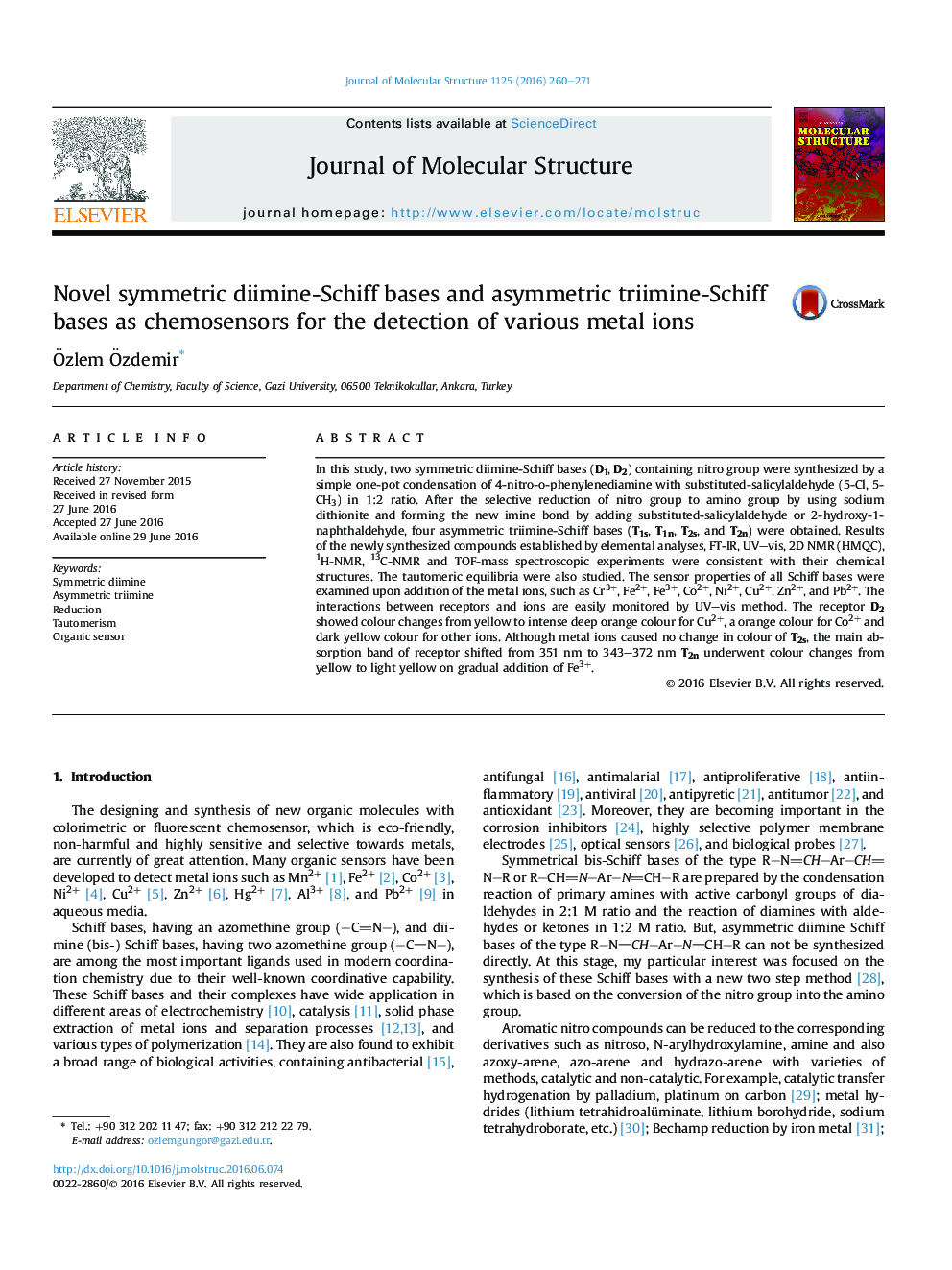| کد مقاله | کد نشریه | سال انتشار | مقاله انگلیسی | نسخه تمام متن |
|---|---|---|---|---|
| 1400936 | 1501692 | 2016 | 12 صفحه PDF | دانلود رایگان |
• Symmetric bis-Schiff bases (D1, D2) were prepared by using 4-nitro-o-phenylenediamine with substituted-salicylaldehydes.
• Asymmetric triimine-Schiff bases (T1s, T1n, T2s, and T2n) were obtained by reducing of the nitro group to amino group in bis-Schiff bases.
• The tautomeric equilibrium of Schiff bases was investigated by spectroscopic methods.
• The sensor properties of Schiff bases were examined upon addition of the metal ions by UV–vis method.
In this study, two symmetric diimine-Schiff bases (D1, D2) containing nitro group were synthesized by a simple one-pot condensation of 4-nitro-o-phenylenediamine with substituted-salicylaldehyde (5-Cl, 5-CH3) in 1:2 ratio. After the selective reduction of nitro group to amino group by using sodium dithionite and forming the new imine bond by adding substituted-salicylaldehyde or 2-hydroxy-1-naphthaldehyde, four asymmetric triimine-Schiff bases (T1s, T1n, T2s, and T2n) were obtained. Results of the newly synthesized compounds established by elemental analyses, FT-IR, UV–vis, 2D NMR (HMQC), 1H-NMR, 13C-NMR and TOF-mass spectroscopic experiments were consistent with their chemical structures. The tautomeric equilibria were also studied. The sensor properties of all Schiff bases were examined upon addition of the metal ions, such as Cr3+, Fe2+, Fe3+, Co2+, Ni2+, Cu2+, Zn2+, and Pb2+. The interactions between receptors and ions are easily monitored by UV–vis method. The receptor D2 showed colour changes from yellow to intense deep orange colour for Cu2+, a orange colour for Co2+ and dark yellow colour for other ions. Although metal ions caused no change in colour of T2s, the main absorption band of receptor shifted from 351 nm to 343–372 nm T2n underwent colour changes from yellow to light yellow on gradual addition of Fe3+.
Figure optionsDownload as PowerPoint slide
Journal: Journal of Molecular Structure - Volume 1125, 5 December 2016, Pages 260–271
